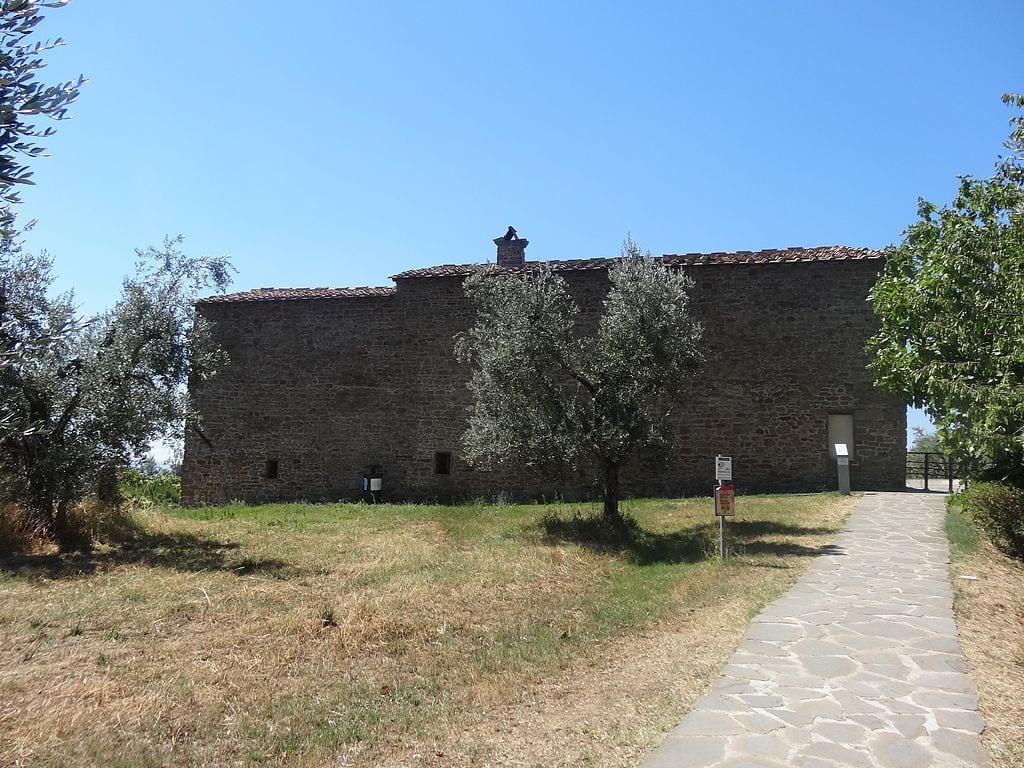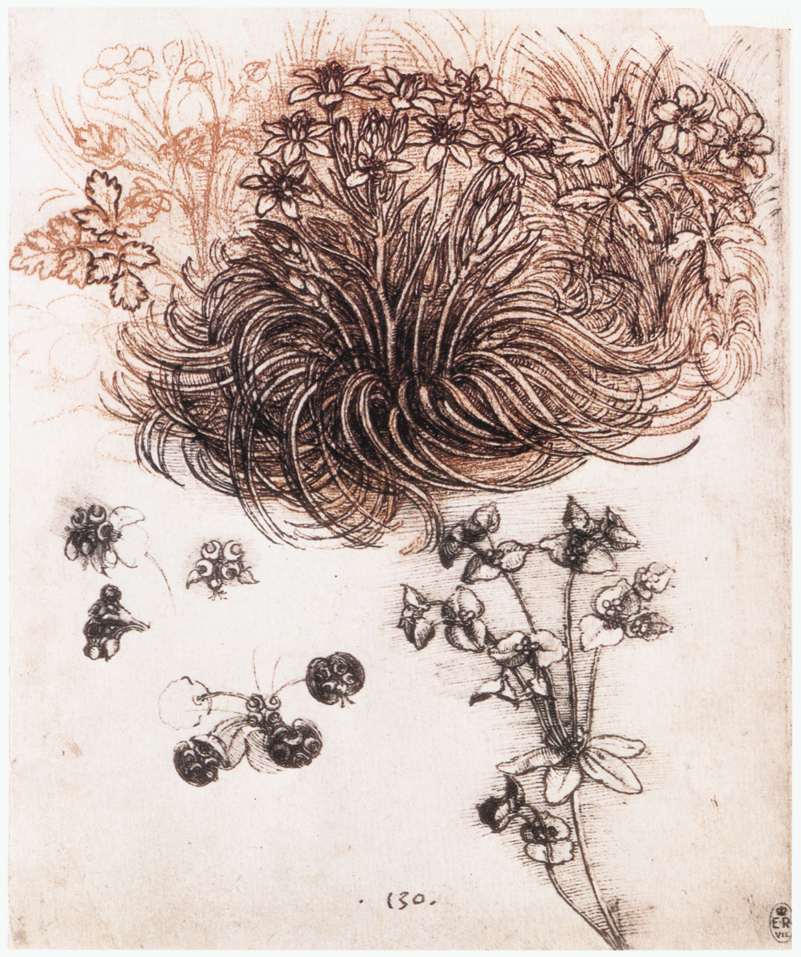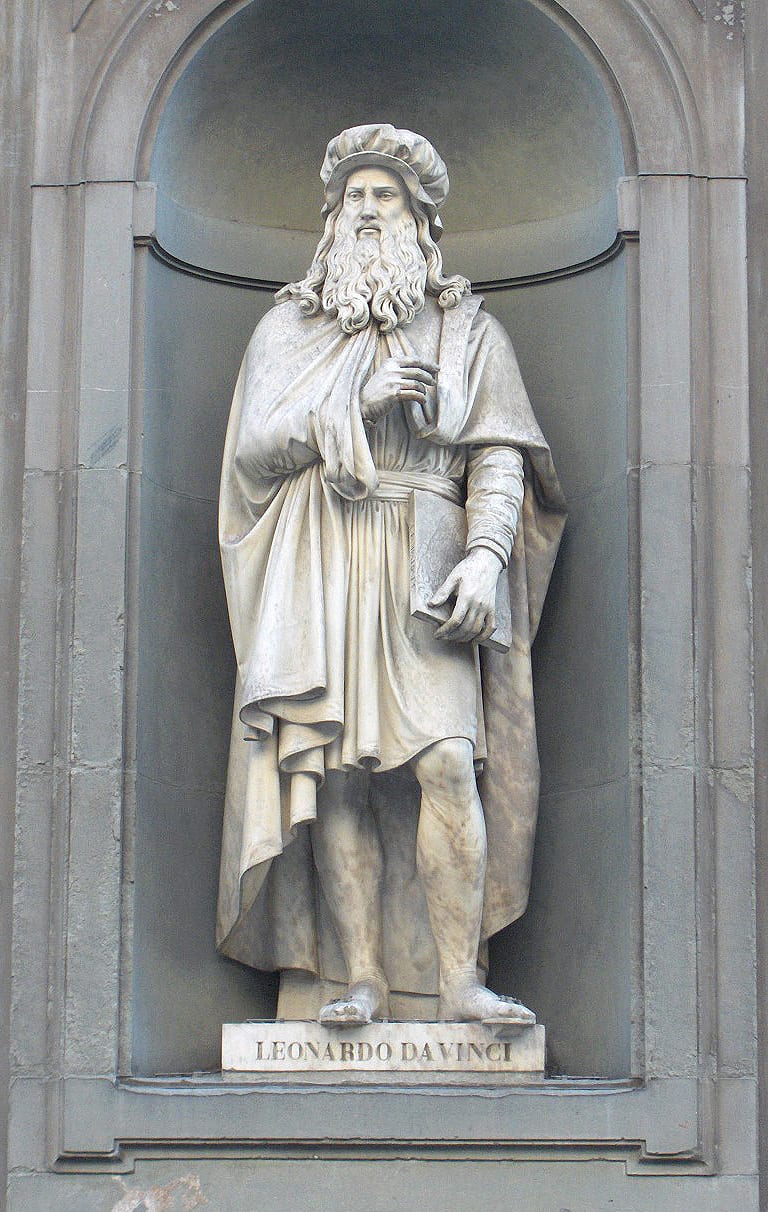Leonardo di ser Piero da Vinci, aka Leonardo da Vinci, was a defining figure of the Renaissance. He was born in 1452 in Vinci, in the present-day Tuscany region, and died in 1519 in Ambroise, France. An inventor, artist, architect, scientist, musician and engineer, Leonardo was the epitome of a Renaissance man.
He is most famous for painting his masterpieces The Last Supper and the Mona Lisa. Many of his inventions – a parachute, a flying machine, and a tank among others – were only conceptions because his creativity outpaced the technology of the day. But others, like his automated bobbin winder, were manufactured and put to use in his lifetime.
The scope of his life and work is enormous. So, scroll through these deeper facts and discover something new. Like the ‘Universal Genius’ himself, said, “Learning never exhausts the mind.”

Photo Credit: Raffaello Sanzio Morghen, Public Domain
1. Leonardo was the illegitimate son of a well-respected notary and lawyer, Messer Piero Frosino di Antonio da Vinci, and a peasant woman named Caterina di Meo Lippi.
He lived with his mother in Anchiano, Italy, until he was five, before going to his father in Vinci.

Leonardo’s birthplace
Photo Credit: Jordiferrer, CC BY-SA 4.0
2. He never received a formal education.
Because of his social standing as a bastard, he learned mathematics and was taught to read and write at home; but most of his knowledge came from spending time outdoors observing nature.

Photo Credit: Public Domain
3. “da Vinci” means “of Vinci,” referring to his birthplace.
So, not his surname.

Photo Credit: Public Domain
4. Leonardo often took on commissions only to never complete them.
The Adoration of the Magi, an altarpiece for the monks of San Donato at Scopeto, was never completed, yet it hangs in the Uffizi Gallery in Florence as an example of his amazing talent.

Photo Credit: Public Domain
5. This pen and ink study of the Arno Valley is his earliest known work.
It was completed August 5, 1473.

Photo Credit: Public Domain
6. He played the lyre.
In fact, when he was presented at the Court of Milan, it was as a musician.
7. Leonardo, along with several male companions, was nearly convicted of sodomy –a serious crime in 15th century Italy.
After he was acquitted–escaping possible execution–he disappeared for a couple of years.
8. He was ambidextrous, able to draw and write forwards and backwards with both hands.
In his journals, he wrote backwards to avoid smudging, although the unusual method left many of his entries difficult to read.

Photo Credit: Leonardo da Vinci (1452-1519), Public Domain
9. As he was in the Milanese royal court when France invaded Italy, Leonardo conceived of many war machines, like tanks, cannons and portable bridges.

Photo Credit: Leonardo da Vinci, Public Domain
10. Leonardo and his contemporary Michelangelo were not friendly and often criticized each other’s works and methods.

Photo Credit: Leonardo da Vinci, Public Domain
Leonardo da Vinci had seemingly limitless creativity and talent. His works, observations and papers can be seen as the roots of modern-day art and engineering.
One question remains, though: When did he sleep?








